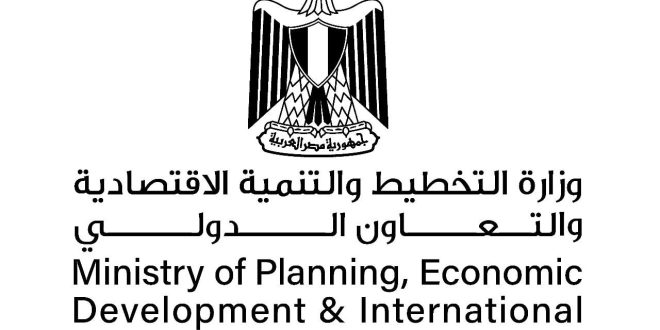أعلنت وزارة التخطيط والتنمية الاقتصاديّة والتعاون الدولي عن استمرار ارتفاع مُعدّل نمو الناتج الـمحلي الإجمالي لـمصر خلال الرُبع الرابع من العام الـمالي 24/2025، ليُسجّل نحو 5%، مُقارنة بمُعدّل النمو الـمُسجّل خلال الرُبع الـمُناظِر من العام الـمالي السابق والذي بلغ 2.4%، وهو أعلى مُعدّل نمو ربع سنوي تم تحقيقه منذ ثلاثة أعوام. وقد سَاهَم هذا الأداء في رفع مُعدّل النمو السنوي للعام الـمالي 24/2025 إلى نحو 4.4%، مُقارنة بمُعدّل النمو الـمُتواضِع الذي تم تسجيله خلال عام 23/2024 البالغ نحو 2.4%، مُتجاوزًا بذلك مُعدّل النمو الـمُستهدف للعام والـمُقدّر بنحو 4.2%. حيث يُؤكّد التعافي الـمُحقّق مرونة الاقتصاد الـمصري في مُواجهة الصدمات الخارجيّة الـمُتتالية التي تعرّض لها خلال الفترة السابقة، وذلك نتيجة للسعي الدائم لتطبيق السياسات الداعمة لاستقرار الاقتصاد الكلي وحوكمة الإنفاق الاستثماري العام، وتحفيز زيادة مُساهمة القطاع الخاص في الاقتصاد مدفوعا باستمرار الحكومة في الالتزام بأجندة الإصلاح التي تم وضعها في إطار البرنامج الوطني للإصلاحات الهيكليّة،
وقد جاء النمو خلال الرُبع الرابع والعام الـمالي 24/2025 مدفوعًا بالنمو الـمُرتفع الذي شهِده عدد من القطاعات الرئيسة، أهمّها قطاع السياحة، قطاع الصناعات التحويليّة غير البتروليّة، وقطاع الاتصالات وتكنولوجيا الـمعلومات.
كما جاء هذا التعافي مدعومًا بارتفاع مُؤشّر الرقم القياسي للصناعة التحويليّة غير البتروليّة بنسبة 18.8% خلال الرُبع الرابع من العام الـمالي 24/2025، مُقارنة بمُعدّل النمو الـمُحقّق خلال الرُبع الـمُناظِر من العام السابق والذي اقتصر على 4.7% فقط على خلفيّة توسّع عدد من الصناعات الرئيسة، مثل الـمركبات (126%)، والـمُستحضرات الصيدلانيّة والدوائيّة (52%)، والـملابس الجاهزة (41%).
على جانب الإنفاق، شهد الربع تحسن ملحوظ في مساهمة الاستثمار والمخزون في الناتج، التي انتقلت من السالب إلى الموجب، مما يشير إلى استعادة تدريجية للزخم الاستثماري. وقد أظهرت البيانات تحولًا مهمًا في هيكل الاستثمار، حيث تراجعت مساهمة الاستثمارات العامة لتبلغ 43.3% من إجمالي الاستثمار والمخزون في العام المالي 24/2025 بعد أن كانت 51.2% في 2023/2024، مقابل صعود حصة الاستثمارات الخاصة إلى 47.5% من إجمالي الاستثمار والمخزون، وهو المستوى الأعلى خلال الأعوام الخمسة الأخيرة.
وفي ظل حالة عدم اليقين العالـميّة، والتوتّرات الجيوسياسيّة التي شهِدتها الـمنطقة، استمر نشاط قناة السويس في التراجُع وإن كان بوتيرة أقل بنسبة 5.48% خلال الرُبع الرابع، و52% خلال العام الـمالي مُتأثّرًا بالتوتّرات الجيوسياسيّة في الـمنطقة، والتي انعكست سلبًا على حركة التجارة البحريّة وأدّت إلى انخفاض ملـموس في أعداد السُفُن العابرة وحمُولاتها. كما استمر تراخي نمو نشاط الاستخراجات حيث شهِد قطاعا البترول والغاز الطبيعي انكماشًا خلال الرُبع الرابع والعام الـمالي. وتجدُر الإشارة إلى أن وتيرة الانكماش بدأت في التراجُع خلال الرُبع الرابع حيث تم استئناف بعض أعمال التنمية للحقول خلال الرُبع.
أبرز النقاط:
جاء مُعدّل النمو الرُبع سنوي الـمُحقّق خلال الرُبع الرابع من العام الـمالي 24/2025 مدفوعًا بتوسّع عدد من القطاعات الرئيسة، مثل السياحة (19.3%)، الصناعة التحويليّة غير البتروليّة (18.8%)، والاتصالات وتكنولوجيا الـمعلومات (14.6%)، والوساطة الـماليّة (10.8%). كما شهِدت قطاعات أخرى انتعاشًا كبيرًا، بما في ذلك التأمين، والكهرباء، وتجارة الجُملة والتجزئة، والتشييد والبناء، مما عزّز النمو الذي شهِده هذا الرُبع.
وعلى الصعيد السنوي، شهِد العام الـمالي 24/2025 مُعدّلات نمو مُوجبة ومُرتفعة لعديدٍ من الأنشطة؛ فقد استحوذ نشاط السياحة (الـمطاعم والفنادق) على أعلى مُعدّل نمو خلال العام بلغ نحو 17.3%، كما سجّل نشاط الصناعة التحويليّة غير البتروليّة مُعدّل نمو مُوجب بلغ نحو 14.7%. كما حقّق قطاع الاتصالات وتكنولوجيا الـمعلومات نموًا ملحوظًا بلغ نحو 13.8%.
استمرار نجاح نشاط الصناعة التحويليّة غير البتروليّة في التعافي ليُسجّل 18.8% خلال الرُبع الرابع من العام الـمالي 24/2025 ونحو 14.7% خلال العام الـمالي 24/2025 مُتجاوزًا بذلك مرحلة الانكماش الذي شهِدها خلال العامين السابقين، وذلك نتيجة لزيادة الإنتاج الصناعي الذي ظهر واضحًا في نمو مُؤشّر الرقم القياسي للصناعة التحويليّة غير البتروليّة.
تزامن هذا النمو الصناعي مع تحسّن ملحوظ في أداء الصادرات، حيث سجّلت صادرات السلع تامة الصُنع زيادة سنويّة بلغت 12.8% خلال الرُبع الرابع، من خلال زيادة صادرات الـمُحضّرات الغذائيّة الـمُتنوّعة بنحو 31.1% وصادرات قطاع الـملابس الجاهزة بنحو 29.2% وصادرت مُستحضرات العطور والتجميل بنسبة 52.7%، وهو ما يعكِس مرونة القطاع الصناعي وقُدرته على الاستجابة السريعة لقوى الطلب العالـمي.
وتجدر الإشارة إلى أن هذا الأداء الإيجابي يعكس ما تسعى الحكومة إلى تحقيقه من خلال «السردية الوطنية للتنمية الاقتصادية: السياسات الداعمة للنمو والتشغيل»، للتحول نحو النموذج الاقتصادي الجديد الذي يركز على استقرار الاقتصاد الكلي والتحول نحو القطاعات الأعلى إنتاجية، حيث جاءت مكونات النمو متسقة مع التوجه نحو تعظيم مساهمة القطاعات القابلة للتبادل التجاري والقطاعات ذات القيمة المضافة العالية، بما يؤكد جدوى المسار الإصلاحي الذي تتبناه الدولة.
على صعيدٍ آخر، لا تزال بعض الأنشطة الاقتصاديّة تُعاني من آثار التوتّرات الجيوسياسيّة التي شهِدتها الـمنطقة ومنها نشاط قناة السويس الذي سجّل مُعدّل انكماش سنوي بلغ نحو 52%، وكذلك تراجُع بنسبة 5.5% خلال الرُبع الرابع من العام الـمالي 24/2025وإن كان بمُعدّل أقل بكثير عن الانكماش الذي شهِده القطاع خلال الرُبع الـمُناظِر من العام السابق والذي بلغ 68.2% على خلفيّة انحسار حركة التجارة البحريّة في منطقة البحر الأحمر وانخفاض عدد السُفُن العابرة بقناة السويس وحمولاتها.
كذلك، استمر تراجُع نشاط الاستخراجات للعام الثالث على التوالي ليُسجّل مُعدّل انكماش بنسبة نحو 9% خلال العام الـمالي 24/2025 نتيجة تراجُع إنتاج قطاعي البترول والغاز الطبيعي خلال العام بنحو 7.5% و19.1% على التوالي. وعلى الرغم من ذلك، بدأت وتيرة الانكماش في الانحسار خلال الرُبع الرابع من العام ذاته ليُسجّل نحو 7.4% جراء أعمال التنمية التي جرى تنفيذها في حقول الغاز الطبيعي بالبحر الـمُتوسط وخليج السويس وغيرها من مكامن الغاز الـمصريّة.
على جانب الإنفاق، سجّلت الاستثمارات المنفذة بالأسعار الثابتة نحو 1.23 تريليون جنيه في العام المالي 2024/2025. ويُلاحظ التحول اللافت في هيكل الاستثمارات، حيث تراجعت مساهمة الاستثمار العام إلى 43.3% بعد أن كانت 51.2% في 2023/2024، مقابل ارتفاع مساهمة الاستثمار الخاص إلى 47.5% من الإجمالي، وهو أعلى مستوى يُسجَّل خلال السنوات الخمس الأخيرة، بما يعكس تنامي دور القطاع الخاص كمحرّك رئيسي للاستثمار والنمو.
___
أعلنت وزارة التخطيط والتنمية الاقتصاديّة والتعاون الدولي عن ارتفاع مُعدّل نمو الناتج الـمحلي الإجمالي لـمصر خلال الرُبع الرابع من العام الـمالي 24/2025، حيث سجّل نسبة 5%، مُقارنة بمُعدّل النمو الـمُتواضع الذي تم تسجيله خلال الرُبع الـمُناظِر من العام الـمالي السابق والذي بلغ 2.4%. وقد ساهم هذا الأداء في رفع مُعدّل النمو السنوي للعام الـمالي 24/2025 ليُسجّل نحو 4.4%، مُقارنة بمُعدّل النمو الذي تم تسجيله خلال عام 23/2024البالغ 2.4%، مُتجاوزًا بذلك مُعدّل النمو الـمُستهدف للعام وهو 4.2%. وقد جاء هذا النمو مدفوعًا باستمرار الحكومة في الالتزام بأجندة الإصلاح التي تم وضعها في إطار البرنامج الوطني للإصلاحات الهيكليّة، والذي يستهدف تحسين بيئة الأعمال، وتعزيز حوكمة الإنفاق الاستثماري، وتحفيز القُدرة التنافسيّة للاقتصاد الـمصري، وتفعيل دور القطاع الخاص بما يضمن الحفاظ على الاستقرار الاقتصادي الكلي.
أكّدت الدكتورة رانيا المشاط، وزيرة التخطيط والتنمية الاقتصادية والتعاون الدولي، أن الاقتصاد المصري واصل تعافيه القوي خلال الربع الرابع من العام المالي 2024/2025، مسجّلًا معدل نمو قدره 5%، وهو الأعلى منذ ثلاثة أعوام، ليصل معدل النمو السنوي في 2024/2025 إلى 4.4%، بما يعكس صلابة الاقتصاد المصري في مواجهة الصدمات الخارجية، ويأتي ذلك على خلفية السياسات الداعمة لاستقرار الاقتصاد الكلي والالتزام بحوكمة الاستثمارات العامة، التي تنتهجها الدولة، فضلا عن تنفيذ السياسات والاجراءات في إطار البرنامج الوطني للإصلاحات الهيكلية.
وأشارت الدكتورة رانيا المشاط إلى أن معدل النمو خلال العام المالي 2024/2025 الذي تجاوز التوقعات الأولية، جاء مدفوعًا بالأداء القوي للصناعات التحويلية غير البترولية، والسياحة، والاتصالات، والوساطة المالية وهو ما يعكس نموذج اقتصادي يرتكز على القطاعات الأعلى انتاجية والأكثر قدرة على النفاذ للأسواق التصديرية، مستفيدة في ذلك مما تم إنجازه من بنية تحتية متطورة تُمثل قاعدة داعمة للتصنيع والاستثمار، وفق ما تم توضيحه تفصيلا في «السردية الوطنية للتنمية الاقتصادية: السياسات الداعمة للنمو والتشغيل» التي أطلقت يوم 7 سبتمبر الجاري.
وقد جاء النمو الذي شهِده الرُبع الرابع من العام الـمالي 24/2025 مدفوعًا بشكل أساسي باستمرار تعافي نشاط الصناعة التحويليّة غير البتروليّة ليُسجّل 18.8% خلال الرُبع الرابع من العام الـمالي 24/2025 ونحو 14.7% خلال العام الـمالي 24/2025، مُتجاوزًا بذلك مرحلة الانكماش الذي شهِدها خلال العامين السابقين. بحيث يتزامن النمو الـملحوظ في الإنتاج الصناعي مع الإجراءات التي اتخذتها الحكومة لدعم النشاط الصناعي من خلال تسهيلات الإفراج الجمركي عن السلع الصناعيّة.
وقد ظهر ذلك جليًا في نمو مُؤشّر الرقم القياسي للصناعة التحويليّة غير البتروليّة بنحو 18.8% في الـمُتوسّط خلال الرُبع الرابع من العام الـمالي؛ حيث شهِدت عِدّة صناعات نموًا مُرتفعًا منها صناعة الـمركبات ذات الـمُحرّكات، والـمُستحضرات الصيدلانيّة والدوائيّة، والـملابس الجاهزة، بنحو 126%، 52%، 41%، على التوالي، هذا بالإضافة إلى تحسّن أداء الصادرات، حيث حقّقت صادرات السِلع تامة الصُنع زيادة بلغت 12.8% خلال الرُبع الرابع، مدفوعًا بنمو عدد من القطاعات التصديريّة ومنها صادرات الـمُحضّرات الغذائيّة الـمُتنوّعة بنحو 31.1% وصادرات قطاع الـملابس الجاهزة بنحو 29.2% وصادرت مُستحضرات العطور والتجميل بنسبة 52.7%.
كذلك سجّل نشاط السياحة (الـمطاعم والفنادق) مُعدّل نمو ملحوظ خلال الرُبع الرابع بلغ نحو 19.3% وهو ما ساهم في استحواذ القطاع على أعلى مُعدّل نمو سنوي للعام الـمالي 24/2025 بلغ نحو 17.3% ويرجِع ذلك إلى زيادة حجم الاستثمارات الـمُوجّهة للبنية التحتيّة السياحيّة، وتوسيع الطاقة الاستيعابيّة للفنادق، وتحسين جودة الخدمات، وتبنّي أساليب تشغيل وتسويق مُبتكرة. الأمر الذي انعكس على جذب أكثر من 17 مليون سائح خلال العام بمُعدّل نمو بلغ 16.4% بجانب ارتفاع عدد الليالي السياحيّة بنحو 16.3% لتصِل إلى نحو 179 مليون ليلة خلال العام.
وبالـمثل، شهِد نشاط الاتصالات وتكنولوجيا الـمعلومات نموًا خلال الرُبع الرابع من العام الـمالي بلغ نحو 14.6%، ووصل مُعدّل النمو السنوي للعام الـمالي 24/2025 إلى نحو 13.8% وذلك في إطار تنفيذ مُستهدفات استراتيجيّة مصر الرقميّة 2022-2026، والتوسّع في الاستثمار في البنية التحتيّة الرقميّة، وإطلاق شبكات الجيل الخامس، وزيادة عدد شركات التعهيد بنسبة 180% لتصِل إلى 186 شركة، وذلك في إطار استراتيجيّة “مصر الرقميّة لتنمية صناعة التعهيد”.
كما شهِدت عِدّة قطاعات اقتصادية مُعدّلات نمو ملحوظة خلال العام ومنها نشاط الوساطة الـماليّة (12.16%)، والنقل والتخزين (7%)، والتأمين (5.6%)، والكهرباء (5.3%)، والخدمات الاجتماعيّة (4.7%) بما يشمل الصحة والتعليم، والتشييد والبناء (4.1%)، وهو ما يعكِس تنوّع مصادر نمو الاقتصاد الـمصري بما يتوافق مع رؤية الدولة لتنويع هيكل الاقتصاد ودفع مُعدّلات التنمية في جميع القطاعات.
وعلى صعيد آخر، سجّل نشاط قناة السويس مُعدّل انكماش سنوي بلغ نحو 52% خلال العام الـمالي 24/2025، وكذلك تراجُع بنسبة 5.5% خلال الرُبع الرابع من العام وإن كان بمُعدّل مُنخفض بشكل ملحوظ، بسبب تأثير سنة الأساس، مُقارنة بالرُبع الـمُناظِر من العام السابق الذي انكمش فيه النشاط بنسبة 68.2% جرّاء الانخفاض في أعداد السُفُن العابرة بقناة السويس وحمولاتها الأمر الذي دفع هيئة قناة السويس لتقديم حزم تحفيزيّة وتخفيض رسوم العبور للتخفيف من حِدّة التأثير السلبي.
شهِد قطاع الاستخراجات تناقصًا بنسبة تقارب 9%، نتيجة لانكماش نشاطي البترول والغاز الطبيعي بنحو 7.5% و19.1% على التوالي. وعلى الرغم من الانكماش الـمُحقّق، إلا أن وتيرة الانخفاض في قطاع الاستخراجات بدأت في الانحسار خلال الرُبع الرابع من العام الـمالي حيث سجّلت نحو 7.4% بسبب أعمال التنمية التي جرى تنفيذها في حقول الغاز الطبيعي بالبحر الـمُتوسط وخليج السويس وغيرها من مكامن الغاز الـمصريّة.
وبالنسبة إلى جانب الإنفاق، شهد الربع الرابع تحسن لافت في مساهمة الاستثمار والمخزون، والتي تحولت من مساهمة سالبة بلغت -0.94 نقطة مئوية في الربع الرابع من 2023/2024 إلى مساهمة موجبة قدرها 4.74 نقطة مئوية في الربع الرابع من 2024/2025. ويعد هذا التحول مؤشرًا مهمًا على استعادة الثقة في مناخ الاستثمار المحلي وتعزيز دور التكوين الرأسمالي في دفع النمو الاقتصادي.
وفيما يتعلق بالاستثمارات المنفذة، كشفت البيانات عن تسجيل إجمالي الاستثمارات نحو 1.23 تريليون جنيه بالأسعار الثابتة في العام المالي 2024/2025، بزيادة طفيفة عن العام المالي السابق الذي سجل 1.21. ورغم أن القيمة الكلية تبدو شبه مستقرة، إلا أن اللافت هو التحول الهيكلي في مكونات الاستثمار. فقد تراجعت قيمة الاستثمار العام، لتهبط مساهمته من 51.2% في العام المالي 2023/2024 إلى نحو 43.3% من إجمالي الاستثمار والمخزون في العام المالي 2024/2025، بينما ارتفعت مساهمة الاستثمار الخاص من 38.8% إلى حوالي 47.5% من الإجمالي في العام المالي الحالي، وهو أعلى مستوى خلال الخمس سنوات الأخيرة. ويعكس هذا التحول توجه الدولة نحو حوكمة الاستثمارات العامة وترشيدها، بالتوازي مع تعزيز دور القطاع الخاص وتحفيزه لقيادة الاقتصاد، بما يسهم في رفع كفاءة توظيف الموارد وتعزيز القدرة التنافسية للاقتصاد.
شهدت التجارة الخارجية خلال العام المالي 2024/2025 أداءً قويًا، حيث ارتفعت الصادرات السلعية والخدمية بالأسعار الثابتة بنسبة 23.7% لتصل إلى 1.7 تريليون جنيه، مدعومة بزيادة صادرات السلع تامة الصنع بنسبة 12.8%، إلى جانب ارتفاع صادرات الوقود والمواد الخام بنسب 29.4% و23.9% على التوالي. وفي المقابل، سجلت الواردات نموًا يعكس دعم النشاط الإنتاجي والاستثماري، إذ استحوذت السلع الوسيطة على 34.5% من الإجمالي بنمو لافت بلغ 55.3%، كما ارتفعت واردات الوقود بنسبة 27%.
وعلى الرغم من حالة عدم اليقين العالـميّة، والتوتّرات الجيوسياسيّة التي شهِدتها الـمنطقة خلال الفترة الـماضية، فقد تجاوز مُعدّل النمو السنوي للعام الـمالي توقّعات الـمُؤسّسات الدوليّة وقد جاء هذا الأداء القوي مدعومًا بالجهود الحالية في تنفيذ الإصلاحات الهيكليّة، لتعزيز استقرار الاقتصاد الكلّي، وتحفيز دور القطاع الخاص في دفع عجلة الانتاج، إلى جانب ضبط أوضاع الـماليّة العامة بما ينعكس إيجابًا على تحقيق نمو مُستدام ويدعم مُناخ الاستثمار.
Press Release
Egypt’s GDP recorded a growth of around 5% during Q4 of FY 24/2025, bringing the annual growth rate to about 4.4% for the fiscal year 24/2025.
The Ministry of Planning, Economic Development, and International Cooperation announced that Egypt’s Gross Domestic Product (GDP) growth rate continued to rise in Q4 of FY 2024/2025, reaching about 5% compared to 2.4% in the same quarter of the previous year—marking the highest quarterly growth rate in three years. This performance contributed to raising the annual growth rate for FY 24/2025 to about 4.4%, compared to the modest growth rate of 2.4% recorded in FY 23/2024, thereby surpassing the initial projections. The achieved recovery reflects the resilience of the Egyptian economy in the face of external shocks over the past period, supported by the continuous implementation of policies aimed at sustaining macroeconomic stability, improving governance of public investment expenditure, and stimulating greater private sector participation in the economy.
The Growth during Q4 and FY 24/2025 was primarily driven by strong performance in several key sectors, most notably tourism, non-oil manufacturing, and communications and information technology.
This recovery was also supported by an increase in the Industrial Production Index for non-oil manufacturing, which rose by 18.8% during Q4 of FY 24/2025, compared to a growth rate of only 4.7% in the corresponding quarter of the previous year. This improvement came on the back of expansions in several key industries, including motor vehicles )126%(, pharmaceutical and medicinal products )52%(, and ready-made garments )41%(.
On the expenditure side, the fourth quarter witnessed a notable improvement in the contribution of investment and inventories, which shifted from negative to positive, indicating a gradual recovery of investment performance.
The data also revealed a significant shift in the investment structure, as the share of public investments declined to 43.3% of total investment and inventories in the current fiscal year, down from 51.2% in 23/2024. In contrast, the share of private investments rose to 47.5% of the total investment and inventories, representing the highest level in the past five years.
Amid continued global uncertainty and the geopolitical tensions witnessed in the region, Suez Canal activity continued to decline, though at a slower pace, falling by 5.48% in Q4 and 52% for the full fiscal year. This decline was largely driven by regional geopolitical tensions, which negatively impacted maritime trade flows, leading to a notable drop in the number and tonnage of transiting vessels. Meanwhile, extractive industries continued to underperform, with the crude oil and natural gas sectors experiencing contractions during both Q4 and the fiscal year. Notably, the pace of contraction began to ease in Q4 as some field development activities resumed.
Key Highlights:
The quarterly growth rate achieved in Q4 of FY 24/2025 was driven by expansions in several key sectors, including tourism (19.3%), non-oil manufacturing (18.8%), communications and information technology (14.6%), and financial intermediation )10.8%(. Other sectors also witnessed a significant increase, such as insurance, electricity, wholesale and retail trade, and construction, all of which supported the growth observed during the quarter.
Throughout FY 24/2025, many activities achieved strong positive growth rates. Tourism (restaurants and hotels) recorded the highest annual growth rate during the year, at approximately 17.3%, while non-oil manufacturing witnessed a positive growth rate of around 14.7%. In addition, the communications and information technology activity also achieved notable growth of about 13.8%.
The continued recovery of the non-oil manufacturing activity was particularly evident, with growth reaching 18.8% in Q4 and about 14.7% for the fiscal year as a whole, surpassing the contractionary phase experienced in the previous two years. This was driven by higher industrial output, reflected in the increase of the Industrial Production Index for non-oil manufacturing.
This industrial growth coincided with a notable improvement in export performance, as exports of finished goods recorded an increase of 12.8% during the fourth quarter, driven by a 31.1% rise in exports of miscellaneous edible preparations, a 29.2% increase in ready-made garments exports, and a 52.7% growth in perfumes and cosmetics exports. This reflects the resilience of the industrial sector and its ability to respond swiftly to global demand dynamics.
It is worth noting that this positive performance reflects an economic model centered on higher-productivity sectors and tradables with greater export potential, supported by recent infrastructure investments that have laid a solid foundation for manufacturing and investment, as outlined in detail in “Egypt’s Narrative for Economic Development: Reforms for Growth, Jobs, and Resilience.”
On the other hand, certain economic activities continued to suffer from the impact of regional geopolitical tensions. Suez Canal activity recorded an annual contraction of about 52%, along with a decline of 5.5% in Q4 of FY 24/2025, though at a much lower rate than the contraction registered in the same quarter of the previous year, which amounted to 68.2%. This performance was driven by the slowdown in maritime trade in the Red Sea region, which led to a drop in both the number and tonnage of vessels transiting the Canal.
Similarly, extractive industries continued to decline, recording a contraction rate of about 9% in FY 24/2025, due to reductions in crude oil and natural gas activities of 7.5% and 19.1%, respectively. Nevertheless, the pace of contraction began to ease in Q4, recording about 7.4%, supported by resumed development works in natural gas fields in the Mediterranean, the Gulf of Suez, and other Egyptian gas reserves.
On the expenditure side, Q4 24/2025 witnessed a rise in the contribution of investment and inventories to growth, which reached 4.74 percentage points.
In terms of investments, the share of public investment declined from 51.2% of total investment and inventories in 23/2024 to 43.3% in the current fiscal year, while the share of private investment rose to 47.5%, reaching its highest level in five years.
The Ministry of Planning, Economic Development, and International Cooperation announced an increase in Egypt’s GDP growth rate during Q4 of FY 24/2025, recording 5%, compared to the modest growth rate of 2.4% registered in the corresponding quarter of the previous fiscal year. This performance contributed to raising the annual growth rate for FY 24/2025 to about 4.4%, compared to 2.4% in FY 23/2024, thereby exceeding the targeted annual growth rate of 4.2%. This growth was driven by the government’s continued implementation of the National Structural Reform Program, which aims to improve the business environment, strengthen the governance of public investment expenditure, enhance Egypt’s economic competitiveness, and foster the role of the private sector, thereby safeguarding macroeconomic stability.
Dr. Rania Al-Mashat, Minister of Planning, Economic Development, and International Cooperation, emphasized that the Egyptian economy sustained a strong recovery in the fourth quarter of FY 2024/2025, recording a growth rate of 5%—the highest in three years—and bringing annual growth to 4.4%. This performance underscores the growing resilience of the Egyptian economy in the face of external shocks, underpinned by policies that safeguard macroeconomic stability, the State’s commitment to strengthening the governance of public investment, alongside the continued implementation of policies and measures under the National Structural Reform Program.
Dr. Rania Al-Mashat further noted that the growth rate achieved in FY 2024/2025, which exceeded initial projections, was driven by robust performance in non-oil manufacturing, tourism, communications, and financial intermediation. This reflects an economic model focused on higher-productivity sectors and tradables with greater export potential, building on the development of advanced infrastructure that provides a supportive foundation for manufacturing and investment, as detailed in “Egypt’s Narrative for Economic Development: Reforms for Growth, Jobs and Resilience” launched on September 7.
Growth in Q4 of FY 24/2025 was primarily supported by the continued recovery of the non-oil manufacturing sector, which grew by 18.8% in Q4 and 14.7% for the fiscal year, surpassing the contractionary phase witnessed over the previous two years. This rebound coincided with government measures to support industrial activity, including facilitating customs clearance procedures for industrial goods.
This improvement was reflected in the Industrial Production Index for non-oil manufacturing, which grew by 18.8% on average in Q4. Several industries achieved high growth rates, including motor vehicles )126%(, pharmaceutical and medicinal products )52%(, and ready-made garments )41%(. Export performance also improved, with exports of manufactured goods rising by 12.8% in Q4, supported by growth in miscellaneous edible preparations )31.1%(, ready-made garments )29.2%(, and perfumes and cosmetics )52.7%(.
Tourism (restaurants and hotels) also recorded significant growth in Q4, reaching 19.3%, enabling the sector to achieve the highest annual growth rate in FY 24/2025 of approximately 17.3%. This performance is attributed to the increase in investments directed toward tourism infrastructure, the expansion of hotel capacity, the enhancement of service quality, and the adoption of innovative operating and marketing approaches. Consequently, the sector succeeded in attracting over 17 million tourists during the year, with a growth of 16.4%, while the number of tourist nights rose by 16.3%, reaching 179 million nights.
Similarly, the communications and information technology activity recorded a growth rate of 14.6% in Q4, bringing the year to 13.8%. This performance came within the framework of implementing the objectives of Egypt’s Digital Strategy 2022–2026, through expanding investment in digital infrastructure, launching fifth-generation (5G) networks, and increasing the number of outsourcing companies by 180% to reach 186 companies, in line with the “Digital Egypt Strategy for the Development of the Outsourcing Industry”.
Other sectors also achieved notable annual growth rates, including financial intermediation (12.6%), transport and storage (7%), insurance (5.6%), electricity (5.3%), and social services (4.7%) (including health and education), as well as construction (4.1%).
On the other hand, Suez Canal activity contracted by 52% on an annual basis in FY 24/2025 and fell by 5.5% in Q4, though at a significantly slower pace due to the base-year effect, compared to the same quarter of the previous year, which had recorded a contraction of 68.2%. This performance was largely attributed to the decline in vessel numbers and tonnage transiting the Canal. This prompted the Suez Canal Authority to introduce incentive packages and reduce transit fees to mitigate the adverse impact.
Likewise, during FY 24/2025, the extractive sector’s output contracted by nearly 9%, driven by declines of 7.5% in oil activities and 19.1% in natural gas activities. Despite this contraction, the pace of decline in the extractive sector began to ease in the fourth quarter of the fiscal year, recording about 7.4%, owing to the development works undertaken in natural gas fields in the Mediterranean, the Gulf of Suez, and other Egyptian gas reserves.
From the expenditure side, there was a significant improvement in the contribution of investment and inventories which shifted from a negative -0.94 percentage points in Q4 23/2024 to a positive 4.74 percentage points in Q4 24/2025. This transition represents an important indicator of renewed confidence in the domestic investment climate and of the strengthening role of capital formation in driving economic growth.
Regarding implemented investments, data indicates that total investments at constant prices reached around EGP 1.23 trillion in FY 2024/2025, up slightly from EGP 1.21 trillion in the previous year. While the aggregate value remained broadly stable, the key development was a structural shift in the composition of investments. The share of public investment declined from 51.2% in FY 2023/2024 to 43.3% in FY 2024/2025, while private investment rose from 38.8% to nearly 47.5%—its highest level in five years. This shift reflects the government’s focus on improving the governance of public investment, alongside strengthening the role of the private sector as the main driver of economic activity, thereby enhancing resource efficiency and boosting the competitiveness of the economy.
In terms of foreign trade, exports of goods and services rose from EGP 1.4 trillion in 23/2024 to EGP 1.7 trillion in 24/2025 at constant prices, achieving a growth rate of 23.7%. Meanwhile, imports of goods and services increased from EGP 1.8 trillion to EGP 2.3 trillion, recording a growth of 29.2%.
At the quarterly level, exports reached approximately EGP 476.5 billion at constant prices in Q4 24/2025. Looking at the structure of merchandise exports during this quarter, finished goods accounted for about 54.5% of total merchandise exports, growing by 12.8%. Fuel exports increased by 29.4%, and raw material exports rose by 23.9%. By contrast, exports of raw cotton declined by 25.5%, while semi-manufactured goods fell by 8.8%.
On the import side, total imports at constant prices amounted to EGP 782 billion in Q4 24/2025. The data showed that intermediate goods accounted for the largest share at 34.5% of total imports, achieving a strong growth of 55.3%. Fuel imports also recorded a growth rate of 27%. In contrast, certain categories witnessed a decline, as imports of raw materials and capital goods fell by 21% and 8.3%, respectively.
Despite global uncertainty and regional geopolitical tensions, Egypt’s annual growth rate for FY 24/2025 exceeded most of international institutions’ projections. This strong performance was supported by the ongoing efforts to implement structural reforms aimed at strengthening macroeconomic stability, stimulating the role of the private sector in driving production, improving public finance management— ultimately contributing to sustainable growth and supporting the investment climate.

 شباب مصر والأمة العربية جريدة إليكترونية شاملة
شباب مصر والأمة العربية جريدة إليكترونية شاملة






